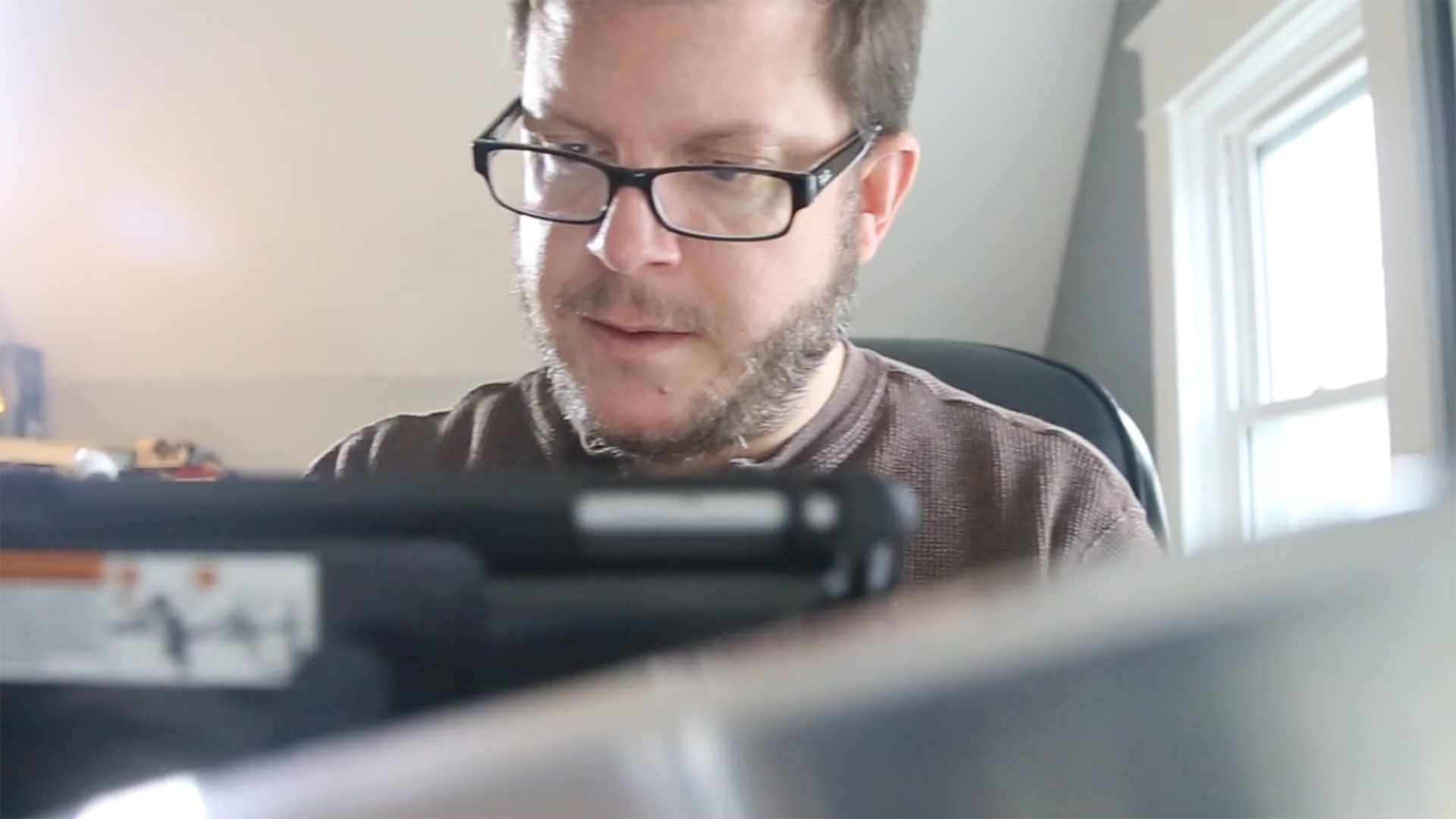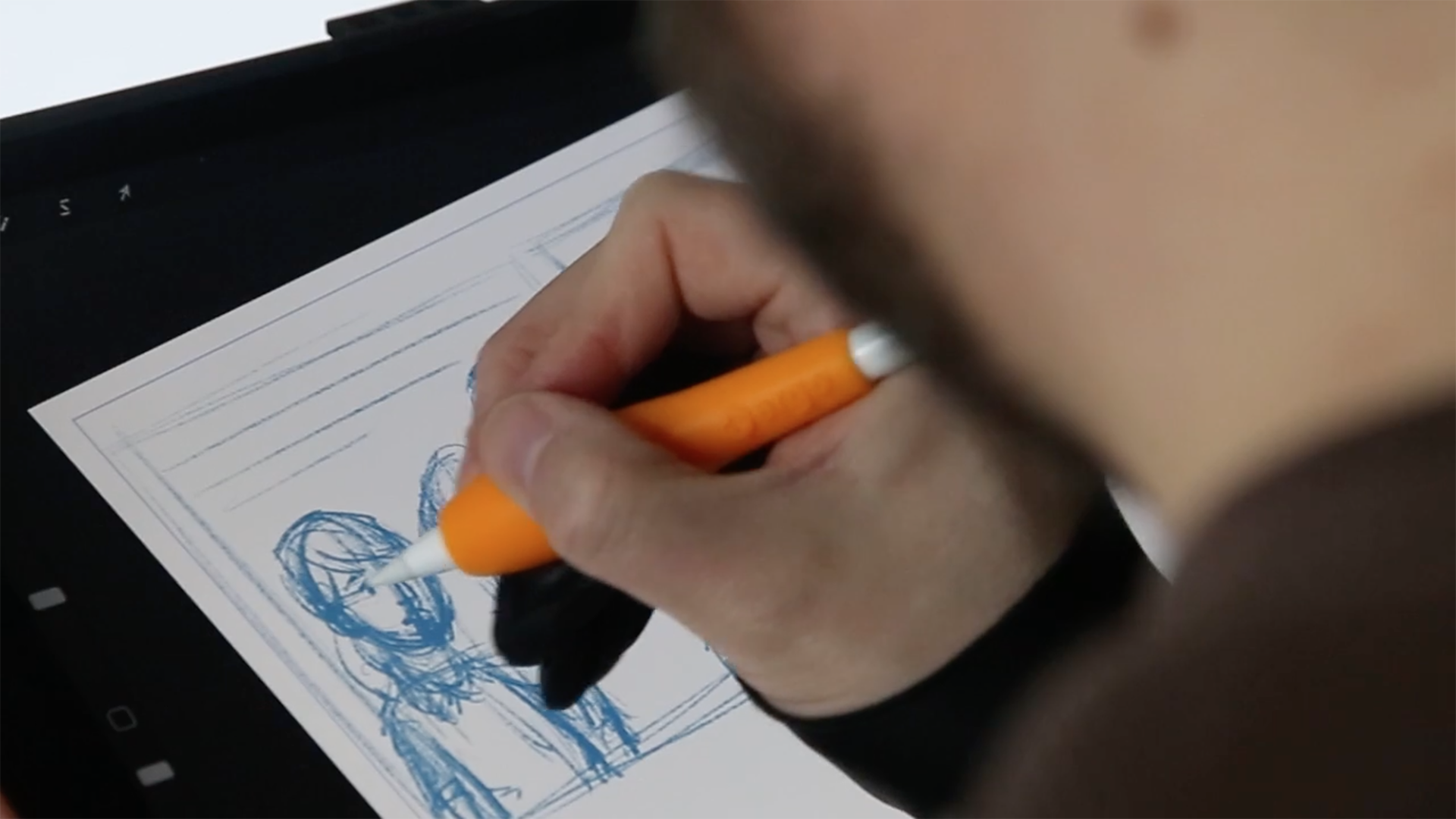WCPO-TV in Cincinnati has a full-time "comics journalist" on staff. He illustrates serious stories that others might avoid, stories that are difficult to photograph because the subjects are too vulnerable.
Kevin Necessary struggles to explain his job.
“I am a digital cartoonist for WCPO in Cincinnati,” he said. “I am a journalist who draws cartoons. I report stories like any other journalist and I tell those stories, often about weighty issues with cartoons.”
Necessary came through the journalism ranks in the usual way. He attended Kent State University's journalism school and worked at the Chillicothe (Ohio) Gazette and, later, The (Palm Springs, California) Desert Sun. At The Desert Sun, he was the art director of the weekly feature publication.
“I would do cartoons here and there,” he said. He wanted to do more.
The Cincinnati Enquirer was the next stop. But when he was laid off in 2009, he started freelancing as a videographer and illustrator.
In 2013, he drew a cartoon and put it on Facebook. A friend from his newspaper days saw it. He was producing a weekly sports cartoon within a year. In 2015, WCPO hired him to draw editorial cartoons for its expanding website.
"In the five-year history of WCPO digital's buildout, we have hired people with different skills or specialties, whether by platform or by reporting expertise," WCPO News Director Chip Mahaney explained. The "digital buildout" is WCPO's bold experiment that included 20 new hires to produce web-only content that would be so valuable that Scripps, the station owner, hoped it would become a model for local stations to attract subscription readers.
“I started bugging people in late 2015 about comics journalism. It is just like any other form of journalism — you go out and report and tell a story and do it in comic book form," he told Poynter. "The most obvious reason is I am a cartoonist. I like drawing stories."
His first in-depth cartoon story was “Childhood Saved,” about children who were caught up in the heroin epidemic that has infected Ohio. The story published May 31, 2016. The next day, WCPO made him a full-time employee, their first digital cartoonist.
Fiona the Hippo

As much as Necessary hoped to be telling weighty stories, it was his drawings of Fiona the Hippo, an iconic figure at the Cincinnati Zoo, that captured the public’s heart. The hippo was born six weeks premature and barely survived.
“WCPO General Manager Jeff Brogan got the idea of a cartoon book about Fiona July 25, 2017, and told me they wanted it to be available to the public on Black Friday, the day after Thanksgiving,” Necessary said. “I said that’s great but it usually takes six months to produce a children’s cartoon book. Aug. 30 they gave the project the green light and 35 days later, I produced a 28-page children’s story of the little hippo who never gave up and how she became the superstar she is today.”
The station didn't have high expectations for the book.
“At first we thought it might sell 500 books, then 1,000, then 2,000," Necessary said. "So far it has sold around 10,000 copies."
WCPO has donated $21,000 from the book sales to the zoo so far — and the station says more money is coming. Fiona became so famous the station produced a documentary about her.
The process
Necessary draws so much that he once had to take a break because he developed “tennis elbow” pain in his drawing arm.
But the images are just part of the story. To write the illustrated narrative, he says he uses an adaptation of “The Marvel Method” of cartoon storytelling developed by cartoonist Stan Lee.
“I write a script, then I illustrate it, then I rewrite the script to match the drawings,” Necessary said.
The story begins with a series of Post-It notes that serve as the bones of the narrative.
Then he begins sketching the story, takes an iPhone photo of the sketches and transfers them to an iPad. Then, he says, he either draws with an app called Procreate or uses an app called Astropad to turn his iPad into a drawing pad to use with Photoshop via his computer. He says drawing on a computer saves time.
Once he settles on the illustrations he refines the script to make the story flow smoothly.
'Living in the Shadows'
This week, Necessary illustrated a documentary called "Living in the Shadows." Co-reported with WCPO multimedia journalist Breanna Molloy, the story is about the difficulty of being a child caught in the crossfire of the debate over immigration.
"I illustrated a comics story and Breanna created a companion documentary," Necessary said. The documentary combined the comics with more traditional news video.

Necessary said he got the idea of using cartoons to tell the stories of undocumented immigrants in Cincinnati when he saw other news stories that only showed the backs of people so as not to identify them.
“You could not see the faces, the emotion,” he said. He began to think that cartoon illustrations could allow him to tell important “face-up” stories that could not be captured on camera.
Necessary said he attended a community event in which a young woman told her story about being born in America to undocumented parents.
"What really struck me was how angry she was about her mother never being around — but the mother was working two jobs to keep the family afloat," he said. "After the speech, I went right up to her and her brother. I think I surprised her, maybe frightened her a little and I said 'I want to tell your story and tell your story in comics form.'"
He spent hours listening to their stories.
Necessary goes through the same steps any journalist would to verify the facts that he can, but by illustrating the story rather than photographing it, he said he realizes that there is a certain amount of subjectivity in his storytelling. But he said the reader understands that the cartoon is an interpretation of the story, unlike a photo or video.
"There is an added layer between what is happening with the story and the reader and not take it as literally and immediately as you might do with a photo," he said.

For television, Necessary and Molloy weaved the cartoons together with video interviews of the family. In the video, WCPO protected Adriana's identity, but the cartoons could show a young girl's face.
This is the third time in recent years that I have shared examples of artistic and illustrated storytelling in different forms. In 2013, I shared "Jennifer's Room," a gut-wrenching investigation of child sex abuse in a developmental center that was supposed to protect mentally disabled children.
A few months ago, I shared a New York Times project called "The Forger," which used shadow puppets to tell the story of a member of the French Resistance who forged thousands of documents to save Jews from being captured by Nazis.
Mahaney said he wants his station to find new ways to tell stories. Necessary's work, he said, may inspire new ways of reaching the public.
"As evidenced this week, he pushes us creatively and makes us better … My big hope is that every few weeks or months, we’ll get to claim another first in journalism enterprise and innovation," Mahaney said. "Kevin is one of the journalists who give us that chance."







